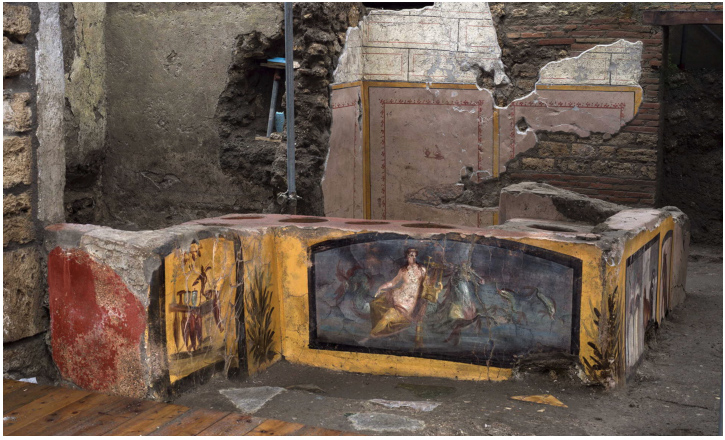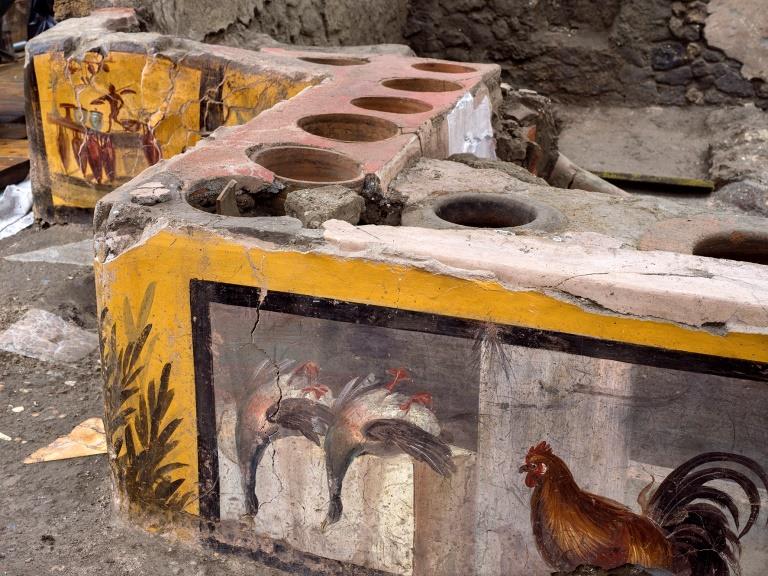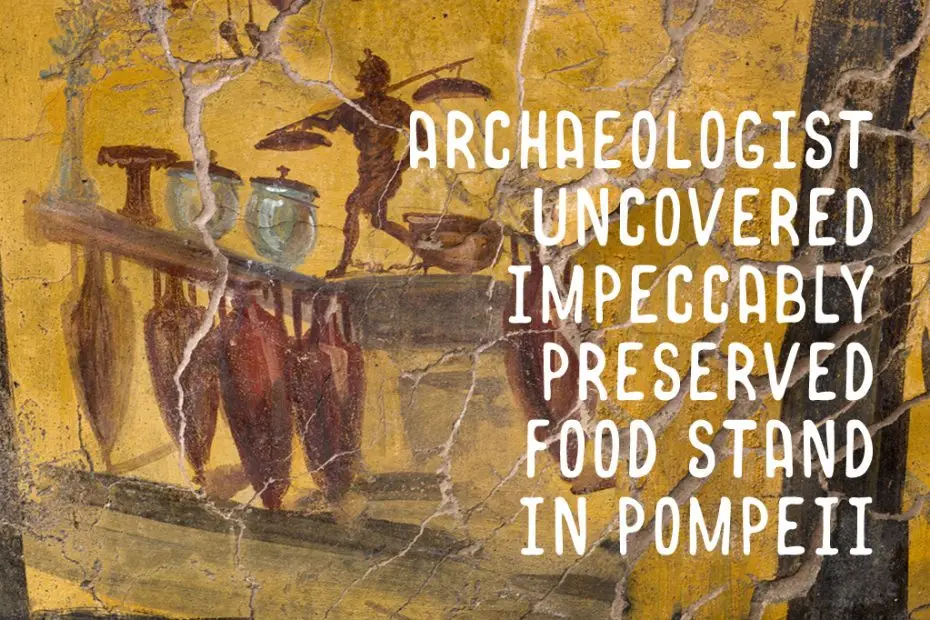Archaeologists have unearthed an ancient thermopolium—aka the Roman equivalent of a street food vendor—at the “Regio V” site in Pompeii.
This thermopolium is thought to be one of about eighty in the Italian city, and excavation on the site began in 2019. When archaeologists discovered that the counter was still in-tact, they extended the project to uncover more of the area. Additional findings now include a small dog’s skeleton and two sets of human bones from people who were trapped when Mount Vesuvius erupted in 79 A.D. Although the remains were disassembled by scavengers who dug up the site in the 17th Century, there’s evidence that one of the individuals was about 50 years and lying down on a bed when the volcano buried the area. The site is slated to open to the public in the spring of 2021 and is just one of the impressive discoveries in Pompeii in recent times.
What They Found
The well-preserved stand is decorated with multiple frescoes, tall jars with two-handles that commonly were used for storage, and some of the formerly available fare, like mallards and chickens. A rendering of a muscular dog adorns another side of the stand with the insult, “Nicia cineadecacator,” scribed nearby. Various food-based remnants were found, as well, including duck bones, fava beans, wine, and a paella-style dish of pork, goat, bird, fish, and snail, alongside cooking dishes, flasks, and storage vessels.
The decorations of the counter – the first to emerge from the excavation – show on the front, the image of a Nereid on horseback in a marine environment, and on the shorter side the illustration, probably of the shop itself as a commercial sign. The discovery, at the time of the excavation, of amphorae placed in front of the counter, not by chance reflected the painted image.
In this new phase of excavation, on the last arm of the counter brought to light other valuable still life scenes emerged, with representations of animals, probably slaughtered and sold in the room. Bone fragments, pertaining to the animals themselves, were also found inside containers obtained in the thickness of the counter containing food intended for sale. In the artwork, were two mallard ducks exposed & upside down ready to be prepared and eaten, also a rooster and a dog on a leash.

In addition, various pantry and transport materials were found in the thermopoly: Nine amphorae, a bronze patera, two flasks, a common table ceramic olla. The floor of the whole room is made up of a layer of cocciopesto (waterproof coating composed of terracotta fragments), in which fragments of polychrome marble (alabaster, portasanta, green breccia and bardiglio) have been inserted in some points.
The thermopolies, where drinks and hot food were served, as the name of Greek origin indicates, preserved in large dolia (jars) embedded in the masonry counter, were very common in the Roman world, where it was customary to consume the prandium (the meal) outside. home. In Pompeii alone there are about eighty.

The First Lab Analysis
(By Valeria Amoretti – Anthropologist)
The first analyses confirm that the paintings on the counter represent, at least in part, the foods and drinks actually sold within the thermopoly: Between the paintings on the counter two mallard ducks are depicted, and in fact a duck bone fragment has been found inside one of the containers, together with pork, goats, fish and land snails, witnessing the great variety of products of animal origin used for the preparation of the dishes.
Got a great Pompeii story of your own to share? Let us know the deal in the comments below…
View source article + a lot more photos



